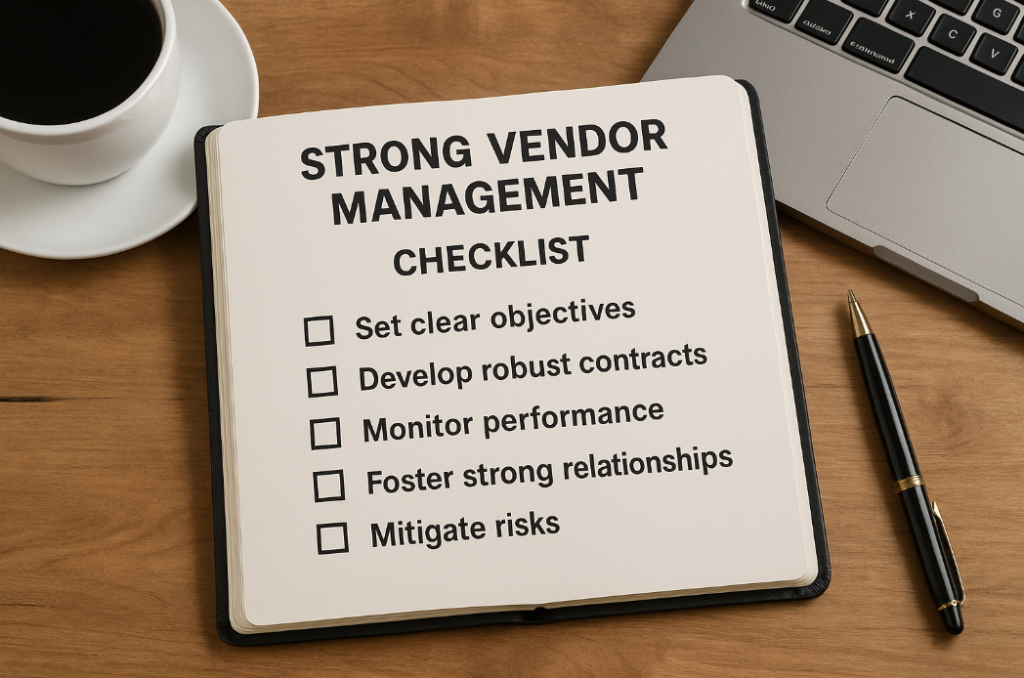A Strategic Perspective for Executives
In the course of leading complex transformation programs – spanning cloud migration, hybrid IT modernization, and regulatory compliance across international enterprises, I have encountered a recurring pattern – when a critical vendor underperforms, the root cause is rarely just technical. More often, it is organizational. And, in some cases, it is personal.
A few years ago, during a large-scale infrastructure transition involving multiple third parties, one of our key vendors failed to deliver on a major milestone. The impact was significant – delays in go-live, regulatory risk exposure, and executive scrutiny. While post-mortem efforts focused initially on contractual terms and SLA breaches, a single comment from the client’s CIO reframed the situation entirely.
“If this vendor was so critical, why didn’t we make them feel like it?”
This prompted a fundamental reassessment. In retrospect, the failure was less about performance and more about enablement. We had underestimated the importance of vendor alignment, onboarding, and strategic integration. Since then, I have approached vendor relationships not as procurement-driven transactions, but as leadership-led partnerships.
From Transaction to Strategic Enablement
In traditional procurement models, vendors are treated as external entities tasked with narrowly defined outputs. However, this model does not hold in contemporary IT ecosystems where resilience, compliance, innovation, and speed are contingent on externally provided capabilities.
Today, many of the most mission-critical services in an enterprise cloud platforms, observability frameworks, security layers, managed infrastructure are delivered not by internal teams, but by extended ecosystems. In such environments, strong vendor management becomes a strategic competency, not an administrative function.
Executives who continue to treat vendor relationships as peripheral are exposed to significant risks:
Lack of visibility into operational dependencies
Delayed detection of delivery misalignments
Compliance vulnerabilities due to integration gaps
Innovation fatigue due to minimal engagement
These risks are magnified in complex programs involving regulated industries, geographically distributed teams, or highly integrated architectures.
Five Foundational Principles for Effective Vendor Leadership
Based on direct experience managing vendor ecosystems across multiple transformation initiatives, I propose the following five principles as foundational for strong vendor engagement. These are not theoretical constructs, but tested practices applied in real-world programs.
1. Provide Strategic and Operational Context Early
Vendors are often handed specifications, SLAs, and deliverables… – but rarely the broader business rationale. This limits their ability to make informed decisions when challenges emerge. Senior leaders should ensure that vendors are given sufficient exposure to strategic objectives, organizational constraints, and stakeholder expectations from the outset.
2. Establish Joint Success Criteria and Governance Cadence
Rather than unilaterally imposed performance indicators, success should be co-defined through a collaborative process. This includes establishing joint KPIs, agreeing on outcome-based metrics, and implementing recurring governance rituals such as monthly reviews, capability assessments, and issue prevention forums.
3. Promote Embedded Participation in Planning and Decision-Making
Vendor teams perform optimally when they are treated as contributors rather than executors. Inclusion in roadmap reviews, sprint planning, retrospectives, and risk discussions allows vendors to adapt proactively and contribute insights based on cross-industry expertise.
4. Enable Transparency Through Structured Communication Channels
Problems do not disappear when unspoken. They escalate. Executive sponsors should establish clear protocols for surfacing concerns, escalating issues, and conducting root cause analyses in a constructive, non-punitive environment. Equally important is the recognition of exemplary performance and early delivery wins.
5. Invest in Vendor Capability Maturity and Long-Term Alignment
High-performing vendor ecosystems are often co-developed. Providing access to documentation, security frameworks, architectural reviews, and where appropriate – training sessions, accelerates delivery and builds loyalty. In some engagements, I have seen long-term vendors outperform newer entrants purely due to continuity, context depth, and trust.
A Practical Checklist for Executive Leaders
To operationalize the above principles, the following checklist may be applied across vendor engagements:
Ensure that vendors are provided with a structured onboarding that includes not only contractual obligations but also strategic context and relevant organizational constraints.
Co-create success metrics that include both delivery KPIs and qualitative outcome indicators such as stakeholder satisfaction, compliance readiness, and adaptability.
Define a recurring governance rhythm that includes formal reviews, but also informal touchpoints with business and technical sponsors.
Integrate key vendor leads into decision-making processes, particularly during architectural changes, regulatory planning, or risk assessments.
Encourage continuous feedback loops that identify process inefficiencies and improvement opportunities on both sides.
Provide controlled access to knowledge resources that enable vendors to accelerate onboarding and improve alignment (e.g., internal playbooks, compliance guidelines, CMDB documentation).
Establish vendor scorecards that evolve over time tracking not only contractual adherence but also relationship quality, innovation delivered, and cultural fit.
Treat vendors as long-term partners, fostering a culture where mutual investment leads to mutual performance.
Leadership as the Differentiator
Ultimately, the quality of a vendor relationship is a reflection of leadership, not procurement strategy. Organizations that succeed in digital transformation, cloud adoption, or operational resilience do so not because of the number of vendors they engage but because of how they lead those relationships.
In environments where systems are interdependent and timelines are unforgiving, strong vendor management is a core leadership capability. It requires clarity, structure, empathy, and consistency. And it delivers dividends through resilience, trust, innovation, and reduced risk exposure.
If your enterprise depends on external providers for mission-critical capabilities, I encourage you to examine not just who you partner with, but how you lead those partnerships. The difference between performance and disruption often lies there.
